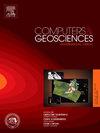SAGEA:一个基于GRACE和GRACE- fo质量变化的综合误差评估工具箱
IF 4.4
2区 地球科学
Q1 COMPUTER SCIENCE, INTERDISCIPLINARY APPLICATIONS
引用次数: 0
摘要
重力恢复与气候实验(GRACE)及其后续任务(GRACE- fo)获得的二级时变重力场在多学科地球科学研究中得到了广泛的应用。然而,对于不熟悉二级产品的用户来说,对这些重力场进行后处理以获得所需的信号是相当具有挑战性的。此外,这些衍生信号的误差评估/量化在科学应用中越来越有需求,即使在专业GRACE(-FO)用户中仍然是一个具有挑战性的问题。在本文中,我们回顾了已知的后处理步骤,以及它们的实现策略。我们还对基于GRACE(-FO)的质量变化误差进行了全面的研究,并首次将所谓的误差定义为三个独立的类别。这项工作,包括后处理步骤和每个误差的评估,被集成到一个名为SAGEA(卫星重力误差评估)的开源Python工具箱中。SAGEA提供了多种选择,可以灵活地生成信号以及2级产品的完整误差。此外,我们的后处理实现的一种新颖的深度优化获得了比传统方法好100倍的加速。为了验证,与SAGEA一起进行了一些案例研究,以便在全球和地方尺度上对GRACE(-FO) 2级产品进行全面的误差评估。本文章由计算机程序翻译,如有差异,请以英文原文为准。
SAGEA: A toolbox for comprehensive error assessment of GRACE and GRACE-FO based mass changes
The level-2 time-variable gravity fields obtained from Gravity Recovery and Climate Experiment (GRACE) and its follow-on (GRACE-FO) mission are widely used in multi-discipline geoscience studies. However, the post-processing of these gravity fields to obtain a desired signal is rather challenging for users who are not familiar with the level-2 products. In addition, the error assessment/quantification of these derived signals, which is of increasing demand in science application, is still a challenging issue even among professional GRACE(-FO) users. In this paper, we review the known steps of post-processing, along with their implementation strategies. We also make a comprehensive investigation into the error of GRACE(-FO) based mass changes, and for the first time, we define the so-called error into three independent categories. This work, including the post-processing steps and the assessment of each error, is integrated into an open-source Python toolbox called SAGEA (SAtellite Gravity Error Assessment). With diverse options, SAGEA provides flexibility to generate signals along with the full error from level-2 products. In addition, a novel in-depth optimization of our post-processing implementation gains a speed-up of times better than traditional method. For verification, a number of case studies are carried out with SAGEA to obtain a comprehensive error assessment of GRACE(-FO) level-2 product at global and local scales.
求助全文
通过发布文献求助,成功后即可免费获取论文全文。
去求助
来源期刊

Computers & Geosciences
地学-地球科学综合
CiteScore
9.30
自引率
6.80%
发文量
164
审稿时长
3.4 months
期刊介绍:
Computers & Geosciences publishes high impact, original research at the interface between Computer Sciences and Geosciences. Publications should apply modern computer science paradigms, whether computational or informatics-based, to address problems in the geosciences.
 求助内容:
求助内容: 应助结果提醒方式:
应助结果提醒方式:


